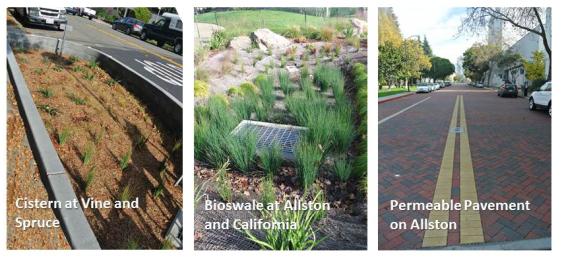The Issue
Stormwater runoff, flooding, soil erosion, depletion of groundwater, water quality concerns are all problems that threaten cities and increasingly, more and more areas of our populated lands. Climate change, higher density populations and increased development in urban areas all contribute to these growing problems. The previous solutions: building walls, barriers, dams and other “built” or “gray infrastructure”, are proving less reliable and prohibitive in cost. Planners today promote the concept of “green infrastructure” -- using nature to provide services and benefits that solve these problems.
Now increasing a part of sustainability efforts for cities, Green Infrastructure concepts use nature and ecological systems (both natural and engineered) to provide social, economic and environmental health to a region - sometimes referred to as “ecosystem services.”
In addition to conserving land and open space, Green Infrastructure may also include urban forests, rain gardens, bio-swales, permeable pavements, green roofs, to help with stormwater control.
What We Can Do
Educate ourselves about Green Infrastructure - how and where it is used, urge local urban areas to support and adopt sustainability Climate Action Plans that include use of Green Infrastructure concepts, and educate the public about the benefits of using nature to help protect water quality, absorb water and replenish acquires, and reduce our stormwater runoff.
Who’s Working on It
Leagues which are focusing on smart development include the Los Angeles and Torrance leagues in southern California. The San Jose/Santa Clara League’s work on the city’s new “Sustainable San Jose” has elements using Green Infrastructure and is urging increased focus on urban infrastructure. The League’s support to preserve Coyote Valley was based on the Green ecological values that the open area provides.

